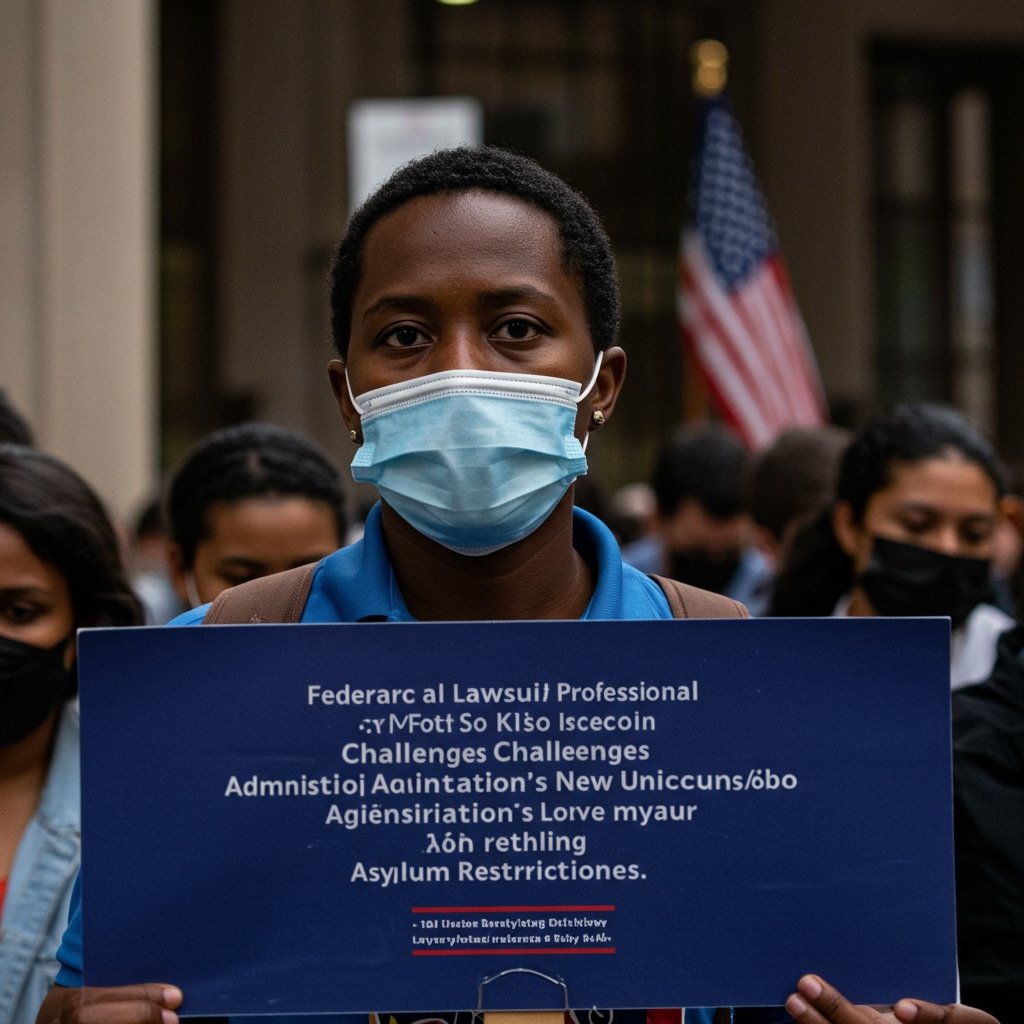Immigrant Rights Advocates Sue Over Border Asylum Policy
WASHINGTON D.C. — A significant legal challenge has been mounted against the executive order issued by the administration on Monday, May 20, which aims to significantly restrict asylum access at the U.S.-Mexico border. The American Civil Liberties Union (ACLU), a leading civil liberties organization, alongside several prominent immigrant rights groups, including Human Rights First and the National Immigration Law Center, filed a lawsuit in federal court in Washington D.C. on Thursday, May 22. The suit contends that the new policy, which limits asylum claims once specific migrant encounter thresholds at the border are met, violates existing United States law and international treaty obligations.
The Executive Order Under Scrutiny
The executive order signed on May 20 establishes a mechanism that would effectively shut down asylum processing at the U.S. southern border for most individuals crossing unlawfully between ports of entry. This stringent restriction is triggered when the average number of daily encounters between ports of entry reaches a specific threshold over a 7-day period. Once this threshold is met, most migrants encountered attempting to cross irregularly would be subject to rapid deportation or removal, potentially without being afforded the opportunity to seek asylum unless they meet very narrow exceptions, such as demonstrating a fear of torture.
The policy is designed to remain in effect until 14 consecutive days pass with encounters falling below a lower specified threshold. Administration officials have stated the measure is necessary to gain control over irregular migration flows and manage resources more effectively at the border, arguing that the current system is overwhelmed.
Plaintiffs’ Central Arguments
The coalition of plaintiffs argues that the executive order and the policies stemming from it unlawfully bypass and undermine the statutory right to seek asylum in the United States, a right explicitly codified in U.S. law. Their lawsuit specifically cites sections of the Immigration and Nationality Act (INA) and the Refugee Act of 1980. These foundational pieces of legislation, the plaintiffs contend, establish a system for processing asylum claims regardless of how an individual enters the country, so long as they are physically present in the U.S. or at a port of entry.
Plaintiffs assert that the administration’s new rule erects an illegal barrier to this process, effectively enacting a near-total ban on asylum for many individuals seeking protection, based solely on generalized border conditions rather than individual circumstances or merits of their claim. They argue this contradicts the clear intent and text of U.S. asylum law, which was reformed following the Refugee Act of 1980 to align U.S. policy with international refugee protection standards.
Furthermore, the lawsuit posits that the executive order violates international obligations, particularly those stemming from the 1951 Refugee Convention and its 1967 Protocol, to which the United States is a party. These treaties, among other things, prohibit penalizing refugees for irregular entry when fleeing persecution. The plaintiffs argue that denying access to asylum based on the method of entry or generalized border statistics constitutes a violation of these fundamental international protections.
The Organizations Involved
The lawsuit is led by the ACLU, a venerable organization with a long history of defending civil liberties and rights in the United States. They are joined by Human Rights First, an independent advocacy organization that challenges injustice and promotes human rights, with a significant focus on refugee protection and asylum law. The National Immigration Law Center (NILC), another key plaintiff, is a national organization dedicated to defending and advancing the rights and opportunities of low-income immigrants and their families.
These organizations collectively possess extensive expertise in immigration law, human rights, and constitutional litigation. Their involvement underscores the gravity of the legal challenge and the depth of their concerns regarding the new policy’s impact on vulnerable populations seeking safety in the United States.
Legal Basis of the Challenge
The core of the plaintiffs’ legal argument rests on the principle that the executive branch cannot override statutory rights established by Congress. They maintain that the Immigration and Nationality Act, as amended by the Refugee Act of 1980, provides a clear pathway for individuals fleeing persecution to apply for asylum. Section 208(a) of the INA, in particular, grants eligibility to apply for asylum to any alien who is physically present in the United States or arrives in the United States, irrespective of their immigration status. The plaintiffs argue that the new executive order attempts to create an exception that is not authorized by these statutes.
Prior court rulings have also played a role in shaping this legal landscape. Courts have previously struck down administration attempts to impose similar broad restrictions on asylum eligibility, including measures that attempted to limit asylum solely to those entering at ports of entry or those who had not previously sought protection in transit countries. The plaintiffs will likely draw upon these precedents to argue that the current order suffers from similar legal infirmities.
Seeking Immediate Relief
Central to the lawsuit is a request for an immediate injunction. The plaintiffs are asking the federal court in Washington D.C. to issue a preliminary injunction that would halt the implementation and enforcement of the new asylum restrictions while the case proceeds through the legal system. They argue that absent immediate court intervention, individuals fleeing persecution will be unjustly denied their legal right to seek asylum, facing potential deportation to dangerous conditions, resulting in irreparable harm.
An injunction, if granted, would temporarily block the administration from applying the restrictive provisions of the executive order, allowing asylum processing to continue under the rules that were in place prior to the May 20 order. The request for immediate relief signals the plaintiffs’ urgency in preventing the policy from taking effect and causing what they view as serious and irreversible harm to asylum seekers.
Administration’s Response
As of the filing of the lawsuit on Thursday, May 22, the Justice Department, which would represent the administration in this legal matter, had not yet publicly commented on the filing. The lack of immediate public comment is typical practice as government lawyers review new litigation and prepare their response.
The lawsuit initiates a potentially lengthy legal battle over the scope of executive authority in setting immigration policy and the fundamental right to seek asylum under U.S. law. The outcome of this case could have profound implications for border management and the future of asylum in the United States.






